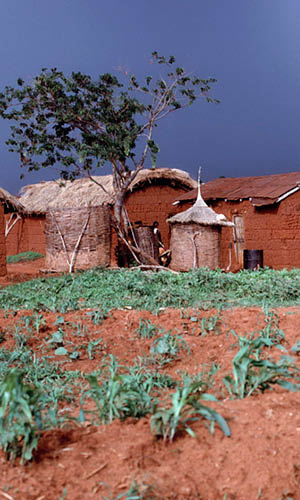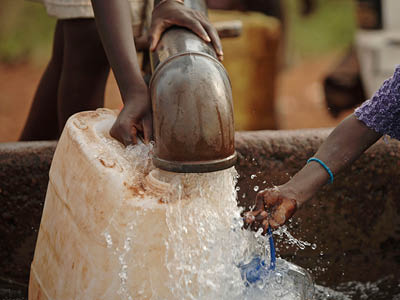Research Brief
Potential impacts of climate change on national water supply in South Africa
Climate change risks for run-off and irrigation demand vary significantly across South Africa, with some regions expected to experience increased drying and others flooding
Smaller impacts on water resources by 2050 are expected if global emissions are mitigated
Even under strong mitigation policies areas such as the Western Cape catchments, and regions with smaller less well integrated water resource systems, are likely to confront climate change-related challenges
Previous studies have shown a general warming in most of Africa as a result of climate change. Further increases in surface temperature and evaporation are highly likely in the case of South Africa, and the possibility of lower precipitation by the mid-21st century remains. Using an integrated assessment model that takes into account both climate and economic data allows the effects of climate change on water supplies to be forecast under different scenarios. Results suggest that continued investments in, and maintenance of, the water supply system will be vital to keep negative impacts to a minimum.
Assessing potential impacts of climate change
The potential effects of climate change over the long term can be assessed by running different scenarios, which show a range of possible effects on water supplies, such as run-off and irrigation. The impact of climate change depends at least partly on the success of global action to mitigate emissions; will they continue to rise unconstrained, or will the global community succeed in curbing them? An integrated assessment model framework shows possible impacts on demand for urban, bulk industry, and irrigation use by 2050 under two scenarios: unconstrained global emissions, and a global mitigation scenario consistent with the target of maintaining the global temperature rise at two degrees Celsius (see Webster and colleagues 2011), which we call level one stabilization.

Unconstrained global emissions expected to affect regions differently
Without restrictions on global emissions, changes to average annual water run-off — or overland water flows — by 2050 range between -13% and +48%, with increased run-off more likely. The median impact in this scenario is +4.4%, however, the regional impact is uneven. Increased drying is highly probable in the west, particularly in the Western Cape where the mean decline in average annual run-off is around 13%. Along the east coast, overland water flows are likely to increase, in some cases by over 50%, raising the risk of flooding. The median increase along the east coast is 11% in this scenario.
Meeting water demands will become difficult in areas where lower run-off is expected. The strain on water resources is amplified by higher demand for irrigated water, as increased temperature and evaporation rates across the country reduce the availability of rainwater for use. By 2050, the median demand for irrigated water will increase by 6.4% compared to a fictional 'no climate change' baseline.
The impact of climate change is limited on water availability for urban, bulk industry and irrigation use with the average impact across models being a very modest decline of 1% in availability. The country’s highly integrated water infrastructure and distribution systems allow water to be transferred between different regions of the country.
If properly maintained, established water networks are expected to meet local demands in nearly all major urban centres and economic hubs. Gouritz, in the southern cape, is an exception. Dependent on smaller and less integrated water resources, the region does not benefit from nationally available water supplies.

Smaller effects expected if global emissions reduced
Under a stringent global mitigation scenario (level one stabilization), the possible impacts of climate change on water availability are diminished. There would be smaller increases in irrigation demands with a median increase of 3.6%. There would also be a narrower range of possible run-off outcomes (-10% to +30%), as climatic changes are smaller and less uncertain. These results highlight the importance of mitigation policy in limiting climate change outcomes.
Continued investment and maintenance required to keep effects on water supply to minimum
By 2050, climate change is likely to have an impact on water availability in most of South Africa. Increased drying or flooding is expected, with the potential for strong localized effects. This is particularly true of regions with small water resource management systems.
Nevertheless, looking out to 2050, the overall effects should be manageable. The relatively limited impact is the result of extensive water resource planning and infrastructure development which has resulted in a highly integrated water infrastructure and bulk distribution systems. Available infrastructure allows water to be transferred between different regions of the country to meet demand.
South Africa’s well-planned and integrated national water supply system provides resilience against future climate change effects
Continued investments in, and maintenance of, this national water supply system are recommended in order to cope with climate change impacts on water availability
South Africa faces administrative and capacity constraints that threaten to undermine this water supply system. Given increasing water demand and the added stress of climate change, continued investments in best practice-based water resources management are recommended.
 Join the network
Join the network